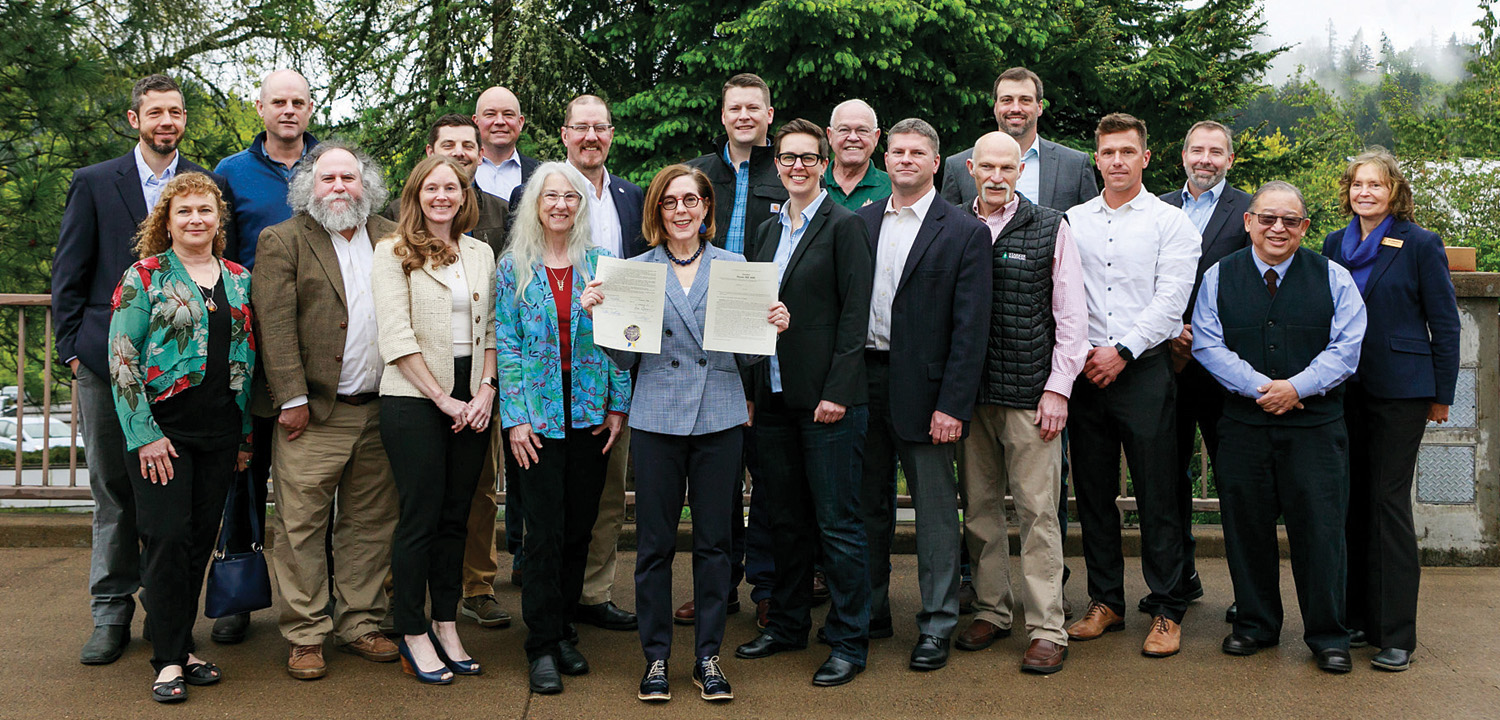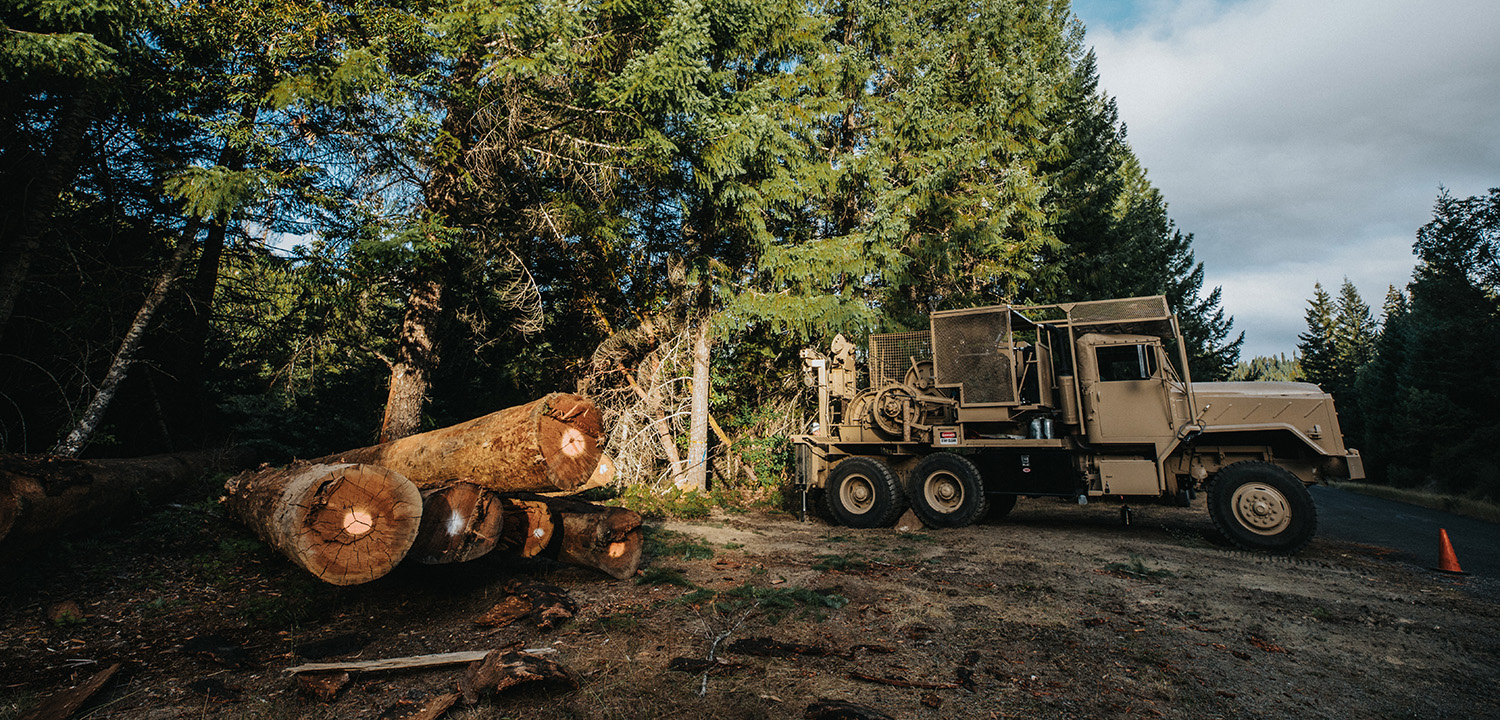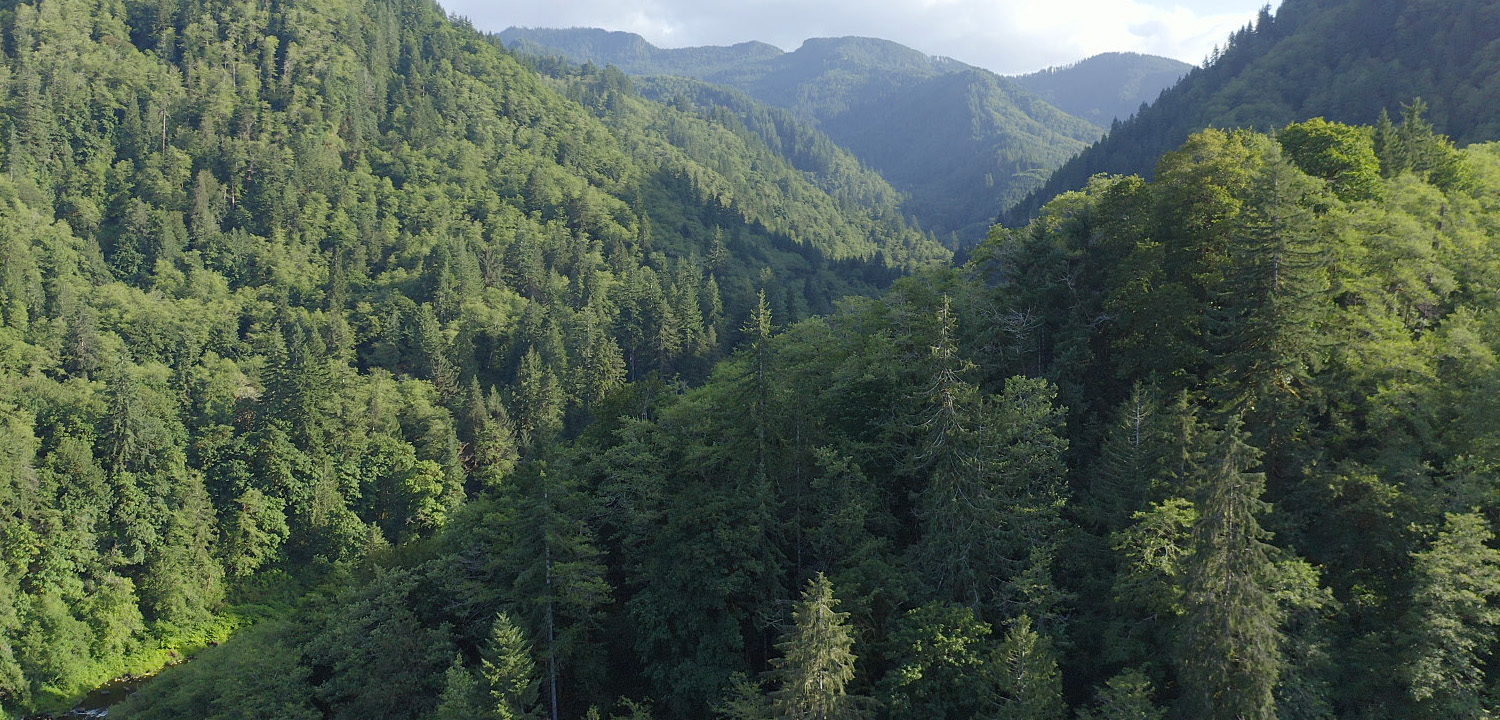We have less than three years left to lock in this landmark agreement’s historic protections. You can help.
By Stacey Detwiler, Wild Salmon Center Oregon Policy Director
The time: late into the night on October 30, 2021. Wild Salmon Center staff and a small group of Oregon conservation advocates huddled with timber industry representatives in a downtown Portland office building.
The group was in constant motion, moving around computers and ducking in and out of conference rooms. Unlikely negotiators—the groups historically took opposite sides on forestry issues—this team had already invested 18 months of their time hashing out sweeping changes to Oregon private timber harvest laws.
Now, we were down to the wire: approaching the end of a tight timeline established by law in 2020, when the sides agreed to come to the table in a precedent-setting Memorandum of Understanding.

As the clock ticked closer to midnight, then-Governor Kate Brown showed up to spur the negotiations along. Then, sometime in the early morning hours of October 31, all parties at last came to agreement. The Private Forest Accord (PFA) was born—the product of hard work, hard compromises, and high stakes. In March 2022, the Oregon Legislature passed the landmark legislation with bipartisan support; in May 2022, Governor Brown signed it into law.
The Oregon Department of Forestry is now implementing PFA’s new rules across more than 10 million acres of private forestland. But as we celebrate PFA’s first three years of life, we look to what’s needed next to secure its historic protections with a long-term habitat conservation plan.
As we celebrate PFA’s first three years of life, we look to what’s needed next.

Why a Private Forest Accord?
Conservation groups including Wild Salmon Center had long called for reforms to Oregon’s outdated private forestry rules: rules that lagged far behind other West Coast states. (The science is clear that logging at any level carries risks for the cold, clean water that wild salmon and steelhead need to survive amidst climate change: science that supports more precautionary forest management.)

Timber groups, meanwhile, pushed back. To avoid a battle between dueling ballot measures in 2020, Governor Brown proposed that conservation and timber industry groups participate in a mediated process to reform the Oregon Forest Practices Act. Under a tight, 18-month timeline, 13 conservation groups (led by Wild Salmon Center’s Bob Van Dyk) and 13 timber industry representatives came together to negotiate sweeping changes to bring the state’s private forestland protections for water and fish closer to those of its neighbors.
The resulting agreement included expanded streamside protections, new requirements for forest roads, updated requirements for harvest on steep slopes, a new adaptive management framework, and significant investments in dedicated grant programs for small forestland owners and mitigation projects.
A key part of the agreement calls for the state to secure a federally-approved Habitat Conservation Plan (HCP) for its 10 million acres of private forestlands by 2027. Throughout 2023 and into 2024, the Private Forest Accord’s original conservation and timber industry authors worked with the Oregon Department of Forestry and Oregon Department of Fish and Wildlife to draft this plan with the deadline in mind. Because without federal approval of the HCP by 2027, the Private Forest Accord—and all its hard-won protections—roll back.
A key part of the agreement calls for the state to secure a federally-approved Habitat Conservation Plan for its 10 million acres of private forestlands by 2027.
Three years later: where do we stand?
Since that eleventh hour agreement in October 2021, Wild Salmon Center and our fellow PFA authors have pushed relentlessly to realize the law’s full vision.
—In January 2024, the full suite of rule changes under the PFA went into effect. (Fact sheet here.) This represents a massive effort from authors, state agencies, and the Governor’s Office to draft, finalize, approve, and fully implement the negotiated rule changes.
—In July 2024, Oregon successfully submitted a comprehensive draft of the PFA HCP to federal agencies (NOAA and the US Fish and Wildlife Service). Completion of the draft is a critical milestone to achieving federal approval of the PFA HCP by 2027.
Now, on the third anniversary of the PFA negotiations, we look to the next three crucial years: a period in which we must secure the wins of the Private Forest Accord for the long haul.
Without a federally approved HCP by December 31, 2027, all PFA rule changes revert to the older, less protective version of the Oregon Forest Practices Act.
Without a federally approved HCP by December 31, 2027, all PFA rule changes revert to the older, less protective version of the Oregon Forest Practices Act.

The next three years: securing legacy forest protections
If Oregon can secure federal approval of a PFA HCP by 2027, we’ll ensure 50 years of increased protections for threatened salmon and amphibians across more than 10 million acres of private forestland. This plan will also provide much-needed additional regulatory certainty for forest landowners.
With our partners, we’re working hard to make sure we secure these long-term reforms. But as with the rocky path to PFA’s 2021 passage into law, we must overcome significant hurdles to meet this next big moment.
Since early 2024, state agencies have been coordinating with the Governor’s Office to craft a proposed budget for the 2025-2027 biennium. As of October, the state hasn’t fully committed to fund critical grants for restoration projects on private forestlands, or for the adaptive management program to make sure the new rules are working. Unless these programs are fully funded, Oregon lacks a clear path to a federally approved Private Forest Accord HCP.

The state has made significant investments in bringing the Private Forest Accord this far, and it’s time to secure this win for Oregon. Together, we have a chance to make sure these improved protections are sustained into the future.
YOU CAN HELP. Oregon Governor Tina Kotek needs to hear from you that protecting cold, clean water for salmon, wildlife and people across more than 10 million acres of private industrial forests matters! Add your voice to ask Gov. Kotek to make sure that the Private Forest Accord is fully funded over the next two years. With your help, we can ensure that these landmark protections remain in place for generations.

